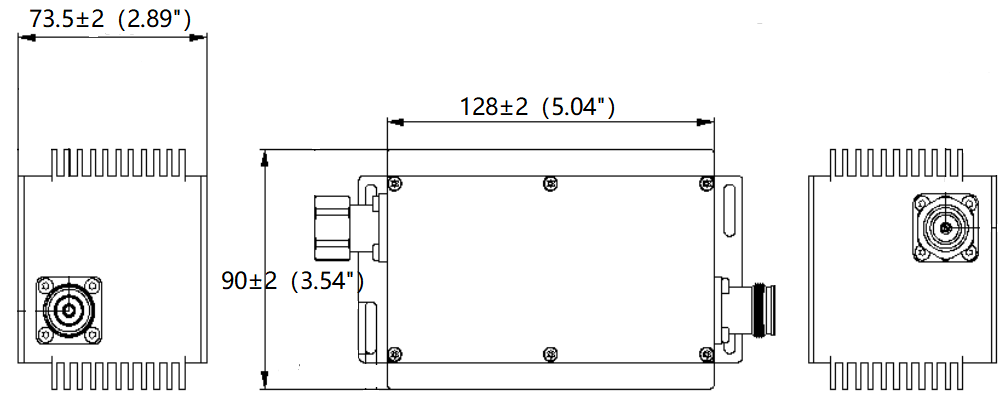Fixed Attenuator
Designed to reduce signal power without distorting waveform integrity, fixed attenuators are essential passive components in RF systems. They provide precise and consistent attenuation levels, enabling proper signal level control, impedance matching, and protection of sensitive components from overpower conditions.
Fixed Attenuators by MCV
MCV fixed attenuators are engineered for dependable performance across a broad frequency range. Available in a variety of attenuation values and connector configurations, they are ideal for use in test and measurement environments, wireless communication systems, defense electronics, and broadcasting applications. Housed in durable, ruggedized enclosures, MCV attenuators offer high reliability and consistent attenuation in even the most demanding RF conditions.

- Wideband – Covers 600 to 6000 MHz
- Attenuation Values from 3 to 40 dB
- Low PIM Device, -160 dBc
- Weatherization to IP-67
- IBWave Supported
Connector Options Available
- 3-10.0 Female (Add -43F to Model Number)
- 3-10.0 Male (Add -43M to Model Number)
- 7/16 DIN Female (Add -DF to Model Number)
- 7/16 DIN Male (Add -DM to Model Number)
Outline Drawing AT Series Attenuators

FAQ about fixed attenuators
What is a fixed attenuator and how does it work?
A fixed attenuator is a passive RF component that reduces signal power by a predetermined amount. It helps maintain proper signal levels, protects sensitive equipment, and improves system impedance matching by dissipating part of the RF energy as heat.
What are common applications for fixed attenuators?
Fixed attenuators are commonly used in test and measurement setups, communication systems, defense and aerospace electronics, signal leveling in transmission lines, and protection of RF components such as amplifiers or receivers from excessive power.
How do I choose the correct attenuation value for my system?
The appropriate attenuation value (e.g., 3 dB, 6 dB, 10 dB, etc.) depends on the signal level reduction needed in your RF path. It’s important to consider the system’s input/output power limits, desired signal levels, and impedance requirements when selecting a fixed attenuator.
What are the key specifications to look for in a fixed attenuator?
Key specs include attenuation value (in dB), frequency range, VSWR (Voltage Standing Wave Ratio), power handling capacity (average and peak), connector type, and impedance (usually 50 or 75 ohms).
Can fixed attenuators be used in both directions?
Yes, fixed attenuators are typically bidirectional and can be installed in either direction without affecting performance, as long as the connectors match and the rated power and frequency specifications are observed.
How can I order fixed attenuator from MCV Microwave?
To place an order for fixed attenuator please contact us and we will help you!